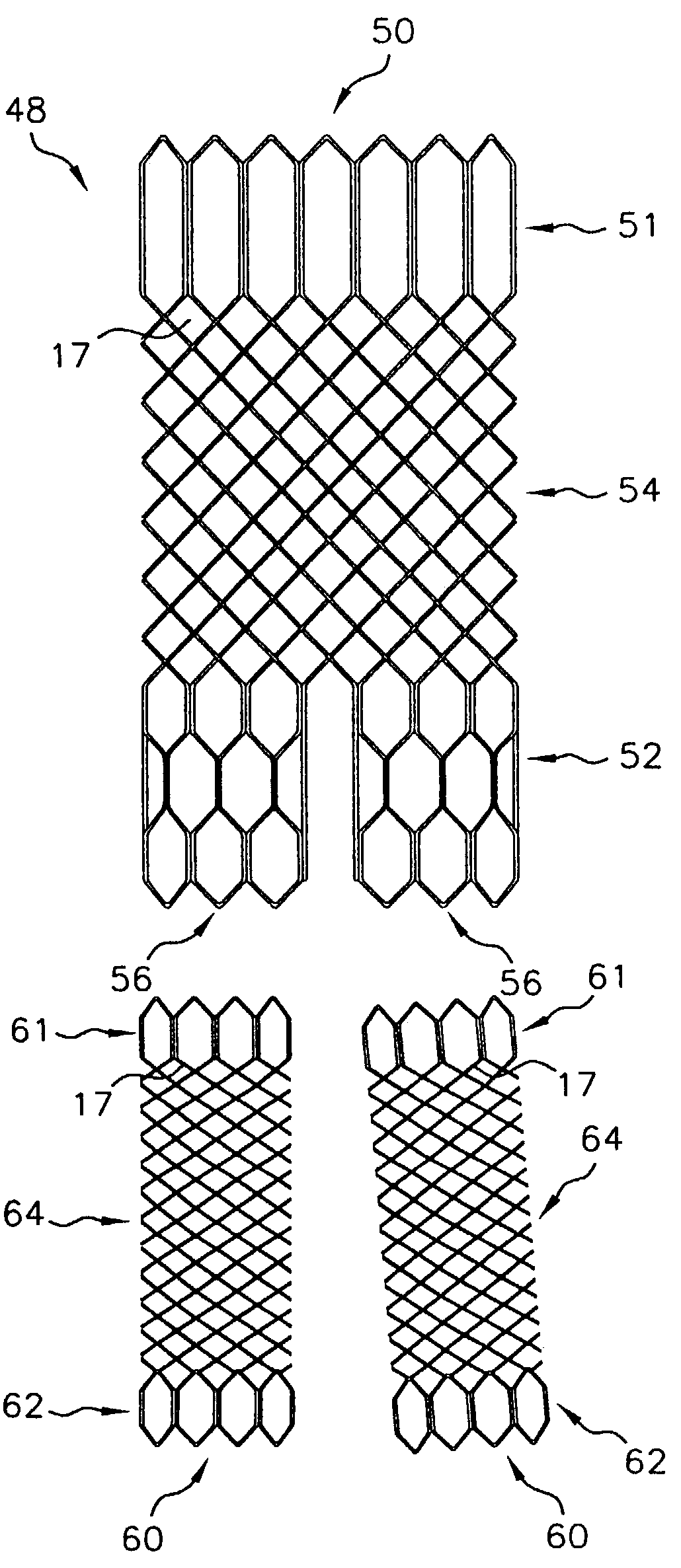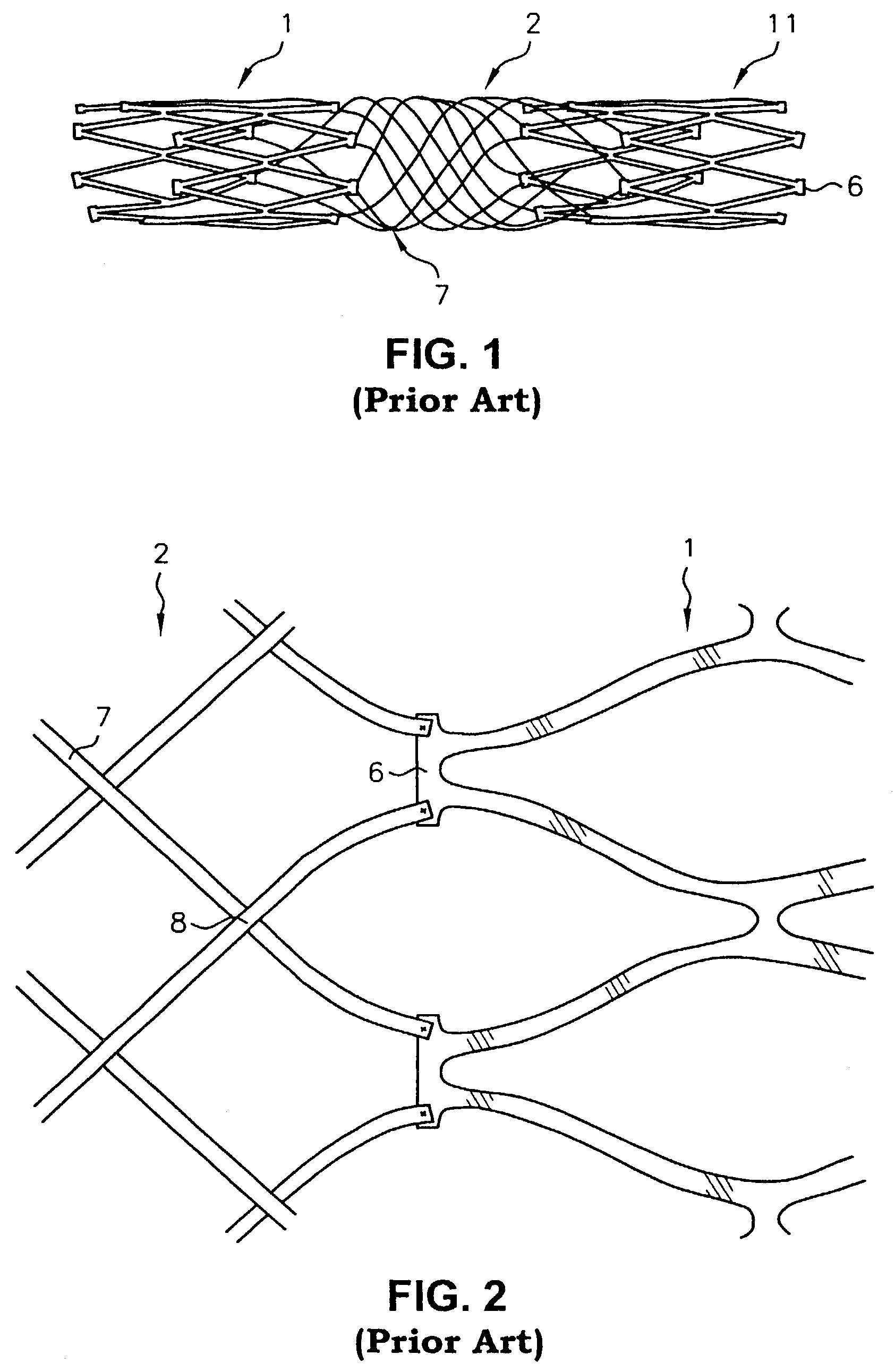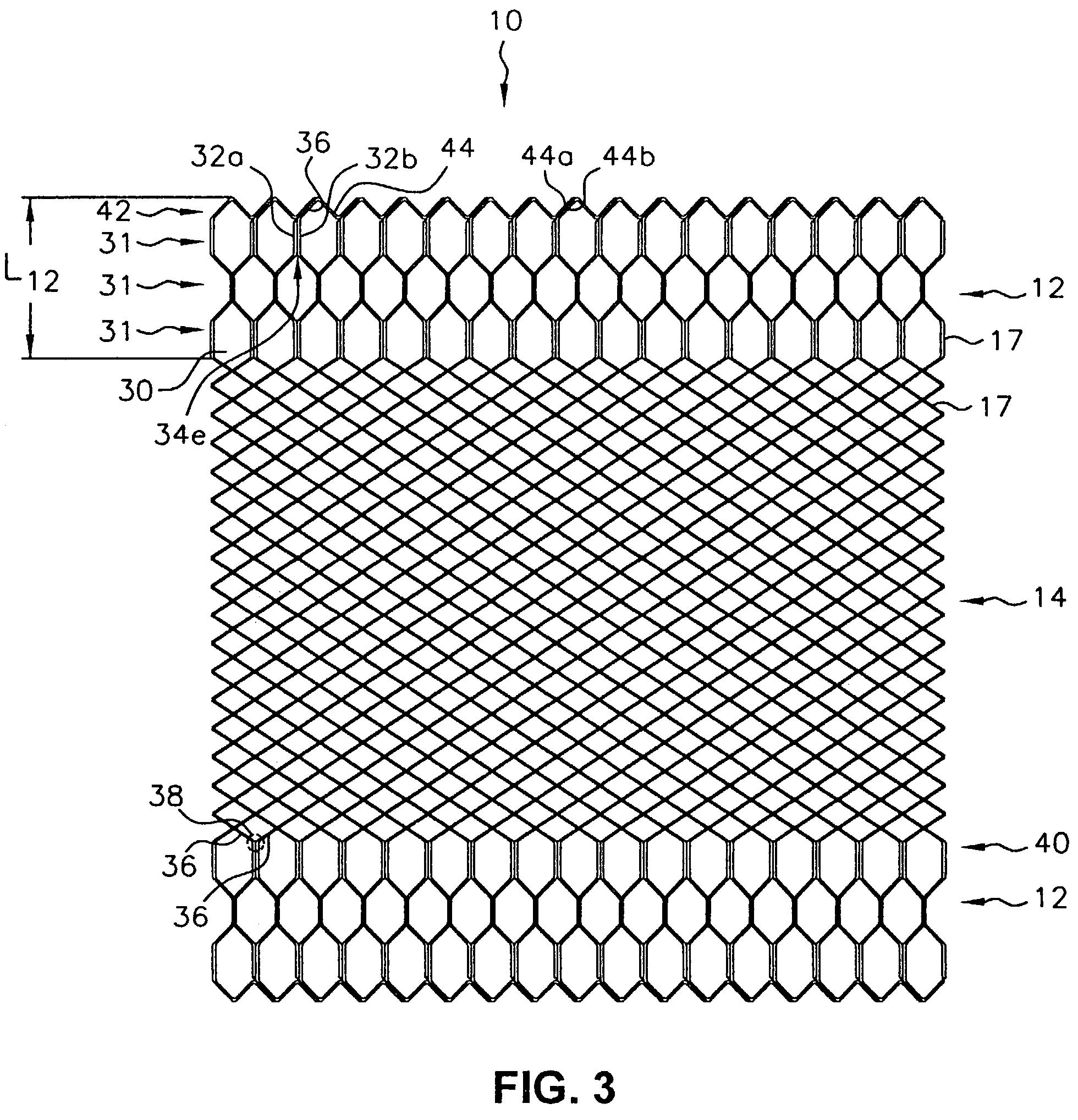Multi-section filamentary endoluminal stent
a filamentary endoluminal and stent technology, applied in the field of endoluminal stents, grafts,/or prostheses, can solve the problems of incomplete sealing or migration of the device after the stent, insufficient radial strength, and insufficient radial strength, so as to reduce the radial strength
- Summary
- Abstract
- Description
- Claims
- Application Information
AI Technical Summary
Problems solved by technology
Method used
Image
Examples
Embodiment Construction
[0043]The invention will next be illustrated with reference to the figures wherein similar numbers indicate the same elements in all figures. Such figures are intended to be illustrative rather than limiting and are included herewith to facilitate the explanation of the apparatus of the present invention.
[0044]FIG. 3 shows an exemplary stent embodiment according to the present invention wherein the tubular stent has been cut along a line parallel to the tubular stent axis and flattened. As shown in FIG. 3, stent 10 comprises two end sections 12 and a middle section 14. Middle section 14 has a first stent architecture that comprises a braided stent such as is described in U.S. Pat. No. 4,655,771 to Hans I. Wallsten, and incorporated herein by reference, and end sections 12 have a second stent architecture that comprises a wound stent. End sections 12 have a wound stent architecture comprising one or more filaments in a repeating configuration having at least one bent portion. As show...
PUM
 Login to View More
Login to View More Abstract
Description
Claims
Application Information
 Login to View More
Login to View More - R&D
- Intellectual Property
- Life Sciences
- Materials
- Tech Scout
- Unparalleled Data Quality
- Higher Quality Content
- 60% Fewer Hallucinations
Browse by: Latest US Patents, China's latest patents, Technical Efficacy Thesaurus, Application Domain, Technology Topic, Popular Technical Reports.
© 2025 PatSnap. All rights reserved.Legal|Privacy policy|Modern Slavery Act Transparency Statement|Sitemap|About US| Contact US: help@patsnap.com



